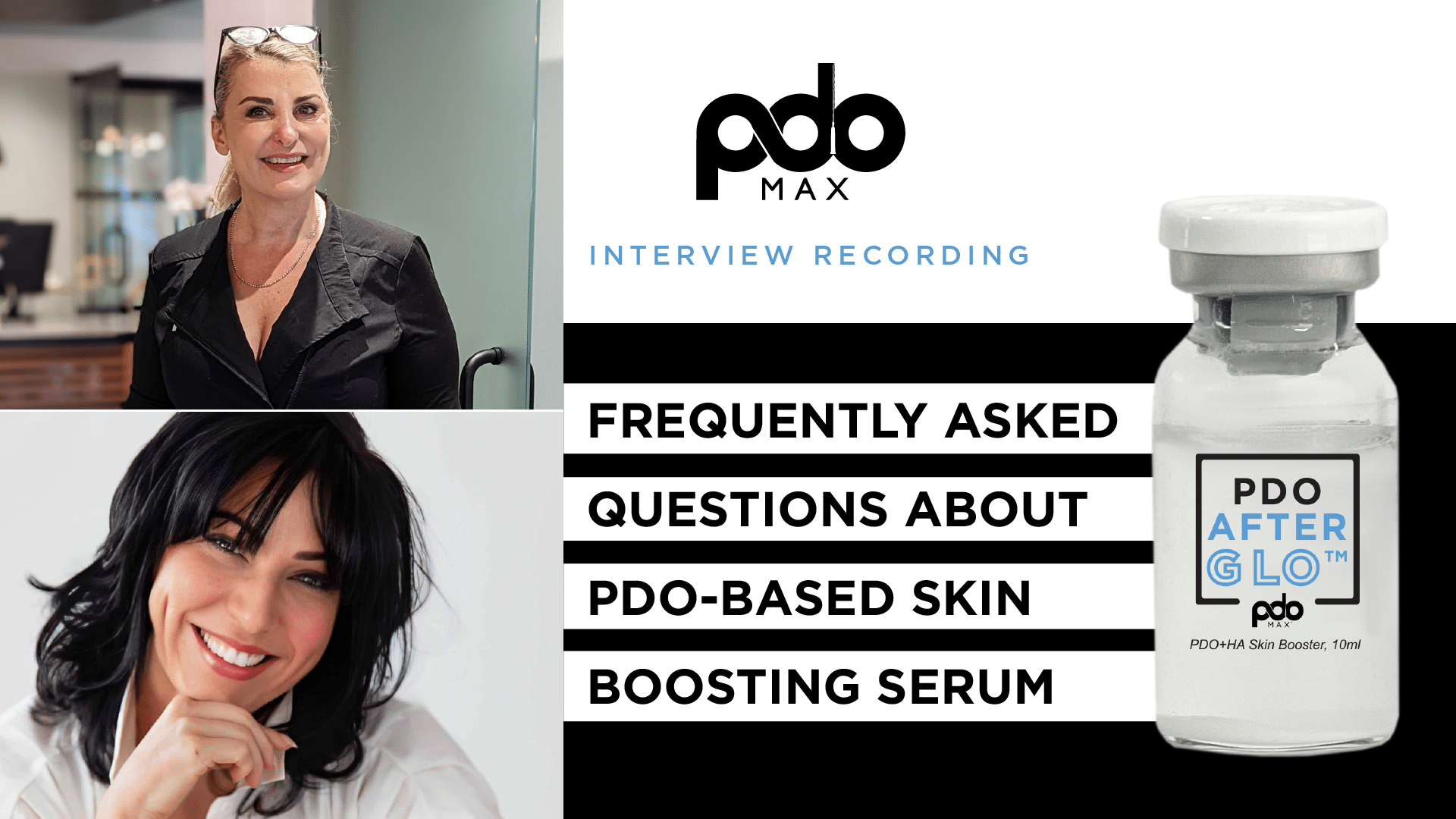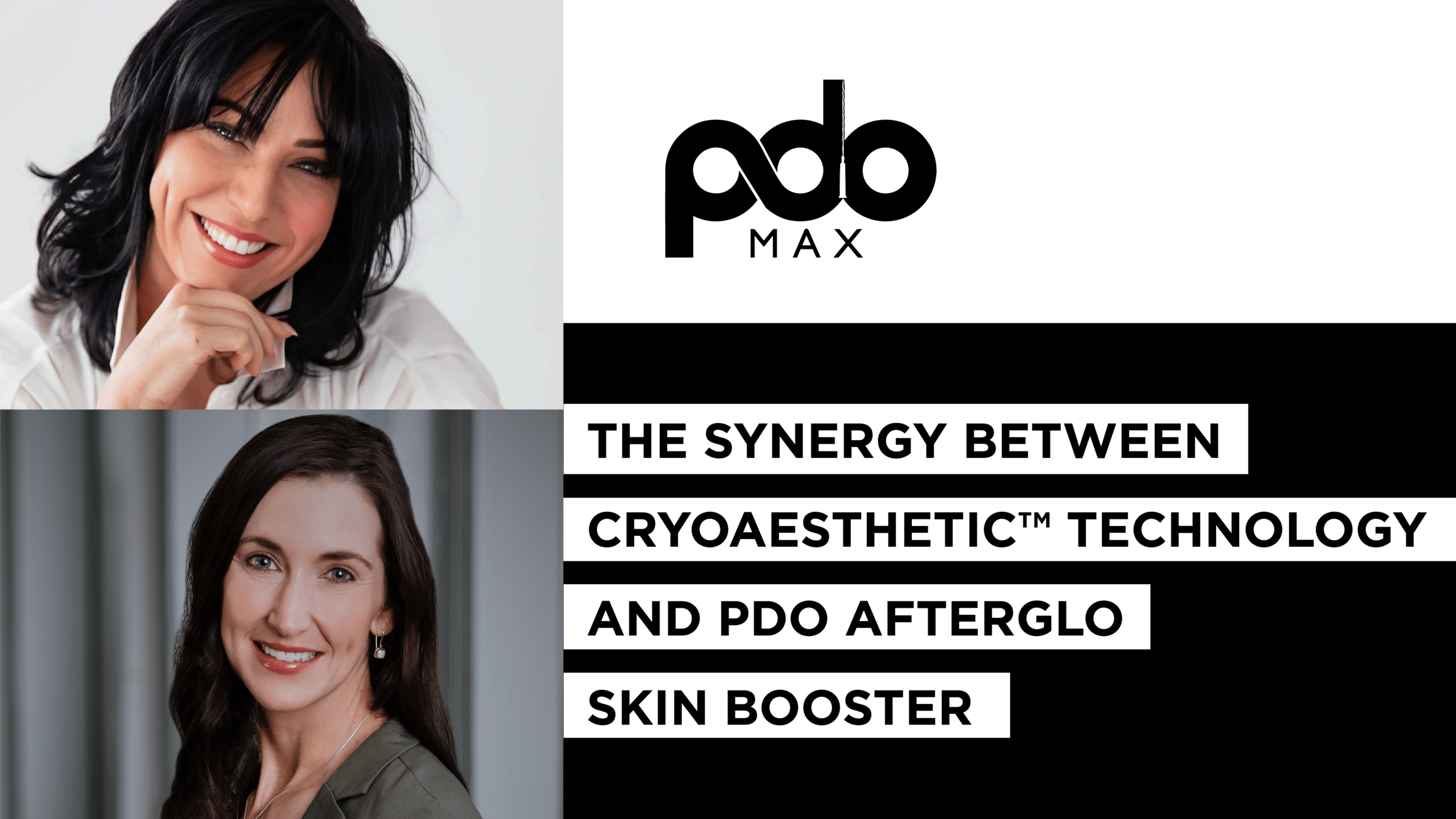PDO Max Founder Giovanna McCarthy answers frequently asked questions about PDO-based skin boosting serum. She…
Before and After: What You Need to Know about PDO Thread Lift Recovery
Download Blog Assets
As you age, your skin gets thinner. Aging causes it to lose its suppleness and elasticity. Over time, this creates noticeable wrinkles on your face. Some people undergo treatments like laser skin resurfacing or a facelift to remedy the situation.
Recently, a new, minimally invasive procedure has emerged as an effective alternative. Polydioxanone (PDO) thread lifting is a cosmetic procedure that inserts medical-grade threads made with biocompatible materials under the skin to pull it up. It tightens the skin and encourages the production of new collagen, resulting in younger-looking skin over time.
Since PDO thread lifting can be accomplished in as little as 30 minutes, more people are choosing it over other cosmetic procedures. If you’re interested in undergoing this procedure, there are some things you’ll need to know to prepare for recovery.

What to Do Before the Procedure
Once you’ve found a practitioner with an FDA-cleared PDO thread distributor, you will receive an action plan. This is based on your skin type and the kind of threading that will be done to it. Although your practitioner will have specific instructions, the following applies to all:
- Avoid smoking and all kinds of alcohol at least a week before the procedure. Both will dehydrate your skin and prevent the anesthesia from working properly. Additionally, cigarettes and alcohol can slow down the healing process.
- Avoid consuming supplements, like omega fish oils and vitamin E, at least a week before the procedure. These will affect your skin’s chemistry and create complications during and after the procedure.
- Avoid aspirin-based products at least a week before the procedure. Products such as Ibuprofen and Naproxen can increase bleeding during the threading process, resulting in complications and side effects, like scarring.
- Avoid high-intensity workouts and saunas/steam rooms at least a week before the procedure. Vigorous exercise and excessive sweating increase your heart rate and blood pressure. Both can present complications during the procedure.
Give yourself some downtime before your thread lift appointment. These temporary lifestyle changes are necessary to make sure the procedure goes smoothly.
What to Do After the Procedure
A PDO thread lift is an outpatient procedure, with a recovery time of two days to a week. In addition to your practitioner’s instructions, there are general guidelines to follow to make the process go smoothly and ensure the best results.
- Avoid wearing makeup for the first 12 hours after the procedure. Cosmetics block your pores and prevent the skin from breathing. The amount of pressure you use in removing makeup can also exacerbate the outcome of the procedure, resulting in swelling or bruising.
- Avoid facials and facial massages for the first ten days after the procedure. These treatments put pressure on your skin, increasing the risk of swelling and bruising. Facial massages might also force the threads out of place, resulting in a botched skin lift.
- Avoid sleeping on your side or stomach during the first week after the procedure. These positions put unnecessary pressure on your face. It can cause discomfort, bruising, or swelling, leaving you with unsatisfactory results.
- Avoid heated environments up to two weeks after the procedure. Heat exposure increases your blood pressure. Opt for a lukewarm bath over a hot shower while your face is still healing. Increase your water intake to maintain normal blood pressure.
Following these instructions will help you manage the healing time after your PDO thread lift procedure. Aside from avoiding side effects like inflammation, it allows your skin time to rest and get used to the changes.
Use FDA-Cleared PDO Threads
Skin will get thinner and less vibrant with age, but this doesn’t mean you have to leave it that way. A PDO thread lift is one of the ways you can lessen or remove wrinkles without going under the knife. You just have to make sure that the right materials are used in the procedure.
When you speak with your cosmetic practitioner, ask them where they get their supplies. PDO Max is one of the only companies in North America that carries FDA-cleared polydioxanone threads-in-cannula. They have been holding training workshops for this procedure for several years now. Make sure your practitioner sources their materials from a company who is FDA cleared for threads-in-cannula.




